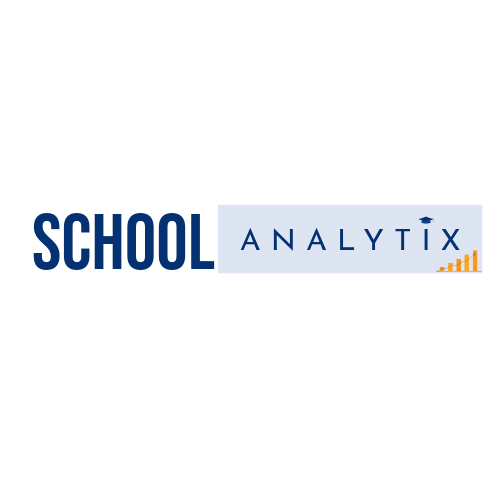Effective communication between parents and teachers is essential for fostering student success and creating a supportive learning environment. In today’s digital age, educational institutions have access to a wealth of data that can facilitate meaningful interactions between parents and teachers. Microsoft Power BI, a leading business intelligence and analytics platform, offers powerful tools and capabilities for visualizing, analyzing, and interpreting educational data to enhance parent and teacher communication. This article explores the role of Power BI dashboards in improving communication between parents and teachers, highlighting its benefits, applications, and best practices for implementation.
The Importance of Parent and Teacher Communication:
Strong communication between parents and teachers plays a vital role in supporting student learning, development, and well-being. When parents and teachers collaborate effectively, they can:
Share Insights: Parents and teachers can share valuable insights and observations about a student’s progress, strengths, and areas for improvement. By exchanging information, they can develop a more comprehensive understanding of the student’s needs and tailor support accordingly.
Set Goals: Collaborative communication allows parents and teachers to set common goals for student achievement and growth. By aligning expectations and objectives, they can work together to support the student’s academic and social-emotional development.
Monitor Progress: Regular communication enables parents and teachers to monitor the student’s progress and track academic performance, attendance, behavior, and other indicators. By staying informed, they can intervene early if issues arise and celebrate successes together.
Provide Support: Effective communication facilitates the exchange of resources, strategies, and support services to meet the student’s diverse needs. Parents and teachers can collaborate on interventions, accommodations, and enrichment opportunities to ensure the student receives the support they need to succeed.
Build Trust: Open and transparent communication builds trust and strengthens the partnership between parents and teachers. When parents and teachers work together as partners in education, they create a supportive and inclusive learning environment that benefits the student and the entire school community.
Leveraging Power BI Dashboards for Parent and Teacher Communication:
Microsoft Power BI offers a powerful platform for creating interactive dashboards and reports that enable educators to visualize and analyze educational data in real-time. By leveraging Power BI’s data integration, visualization, and collaboration features, educational institutions can enhance parent and teacher communication in the following ways:
Real-Time Data Insights:
- Power BI enables educators to aggregate and visualize data from various sources, including student information systems, learning management systems, assessment platforms, and surveys.
- Educators can create interactive dashboards that display real-time data on student performance, attendance, behavior, and engagement. These dashboards provide parents and teachers with immediate insights into the student’s progress and help identify areas for intervention or support.
Customized Reporting:
- Power BI allows educators to create customized reports and dashboards tailored to the needs of parents and teachers. Educators can design reports that highlight specific metrics, trends, or student achievements relevant to each stakeholder group.
- Parents and teachers can access these reports through a secure online portal or mobile app, allowing them to view student data, track progress, and collaborate on strategies for improvement.
Interactive Data Exploration:
- Power BI’s interactive visualizations enable parents and teachers to explore data dynamically and drill down into specific metrics or student groups. They can filter, sort, and analyze data to gain deeper insights into student performance and behavior.
- Educators can use Power BI’s interactive dashboards to facilitate data-driven discussions with parents during parent-teacher conferences or meetings. They can present visualizations that illustrate student progress, identify challenges, and brainstorm strategies for support.
Targeted Interventions:
- Power BI helps educators identify students who may be at risk of falling behind or experiencing academic challenges. By analyzing data on student performance, attendance, and behavior, educators can target interventions and support services to meet the unique needs of each student.
- Parents and teachers can collaborate on intervention plans and track progress over time using Power BI dashboards. They can monitor the effectiveness of interventions, adjust strategies as needed, and celebrate successes together.
Transparent Communication:
- Power BI promotes transparency and accountability in parent and teacher communication by providing access to real-time data and insights. Parents and teachers can access the same information, ensuring alignment and consistency in their discussions.
- Educators can use Power BI dashboards to communicate school-wide initiatives, policies, and updates to parents and teachers. They can share information on upcoming events, academic programs, and resources to support student learning and well-being.
Best Practices for Implementing Power BI Dashboards for Parent and Teacher Communication:
Implementing Power BI dashboards for parent and teacher communication requires careful planning, collaboration, and adherence to best practices. Here are some best practices to consider:
Define Clear Objectives and Key Metrics:
- Clearly define the objectives of using Power BI dashboards for parent and teacher communication. Identify key metrics, such as student achievement, attendance, behavior, and engagement, that will be tracked and analyzed.
- Align objectives and metrics with the goals of the school or district’s strategic plan and stakeholder priorities to ensure relevance and effectiveness in supporting student success.
Engage Stakeholders in Design and Development:
- Involve key stakeholders, including parents, teachers, administrators, and support staff, in the design and development of Power BI dashboards. Solicit feedback, gather requirements, and prioritize features based on user needs and preferences.
- Conduct usability testing and pilot programs to gather feedback and iterate on dashboard design and functionality before full implementation.
Provide Training and Support:
- Offer comprehensive training and support to parents and teachers on how to use Power BI dashboards effectively for monitoring student progress and collaborating on interventions.
- Provide resources, tutorials, and workshops to build data literacy and analytical skills, foster confidence in using data-driven approaches, and promote a culture of collaboration and communication.
Ensure Data Privacy and Security:
- Implement data privacy and security measures to protect sensitive student information and comply with applicable laws and regulations, such as the Family Educational Rights and Privacy Act (FERPA).
- Ensure that Power BI dashboards are accessible only to authorized users and that data access controls and encryption protocols are in place to safeguard student data.
Evaluate Impact and Iterate:
- Continuously monitor the impact of Power BI dashboards on parent and teacher communication and student outcomes. Collect feedback from stakeholders and analyze usage metrics to assess effectiveness and identify areas for improvement.
- Iterate on dashboard design and functionality based on feedback and performance metrics to enhance usability, relevance, and impact over time.
Case Study: Implementing Power BI Dashboards for Parent and Teacher Communication
To illustrate the practical application of Power BI dashboards for parent and teacher communication, let’s consider a hypothetical case study of XYZ School District, a large urban district with a diverse student population and a focus on data-driven decision-making.
Objective: XYZ School District aims to improve parent and teacher communication by providing access to real-time student data and insights through Power BI dashboards. The district seeks to enhance collaboration, target interventions, and support student success.
Stakeholder Engagement: XYZ School District engages parents, teachers, administrators, and support staff in the design and development of Power BI dashboards. Stakeholders provide input on dashboard requirements, functionality, and usability through focus groups, surveys, and feedback sessions.
Dashboard Design: XYZ School District designs Power BI dashboards that display key metrics, such as student attendance, grades, behavior incidents, and assessment scores. The dashboards include interactive visualizations, filters, and drill-down capabilities to enable users to explore data dynamically.
Training and Support: XYZ School District provides comprehensive training and support to parents and teachers on how to use Power BI dashboards effectively. The district offers online tutorials, workshops, and helpdesk support to build data literacy and analytical skills among stakeholders.
Data Privacy and Security: XYZ School District implements data privacy and security measures to protect sensitive student information. The district ensures that Power BI dashboards are accessible only to authorized users and that data access controls and encryption protocols are in place to safeguard student data.
Evaluation and Iteration: XYZ School District evaluates the impact of Power BI dashboards on parent and teacher communication and student outcomes. The district collects feedback from stakeholders, analyzes usage metrics, and iterates on dashboard design and functionality to enhance usability, relevance, and impact over time.
Conclusion:
In conclusion, Microsoft Power BI dashboards offer a powerful tool for enhancing parent and teacher communication in educational settings. By providing access to real-time student data and insights, Power BI dashboards enable parents and teachers to collaborate more effectively, target interventions, and support student success. By following best practices for implementation, educational institutions can leverage Power BI dashboards to foster a culture of communication, collaboration, and data-driven decision-making that benefits students, parents, teachers, and the entire school community.









